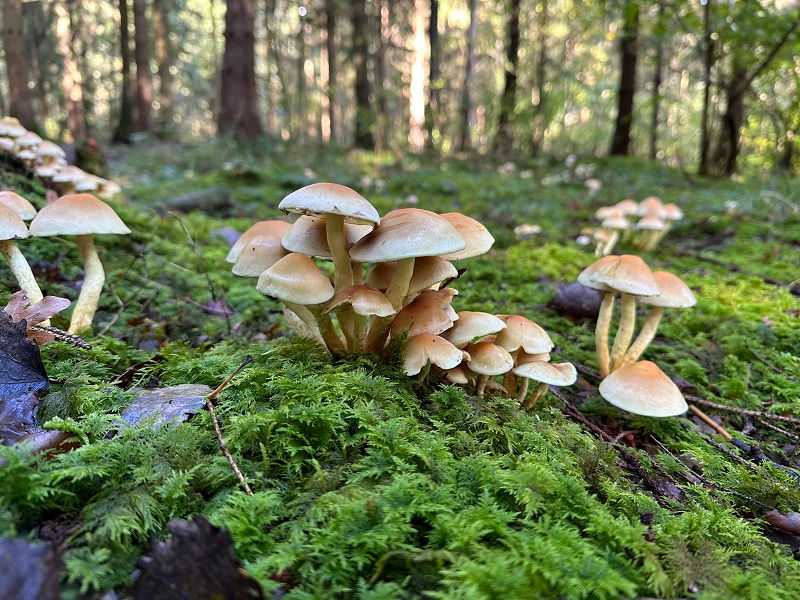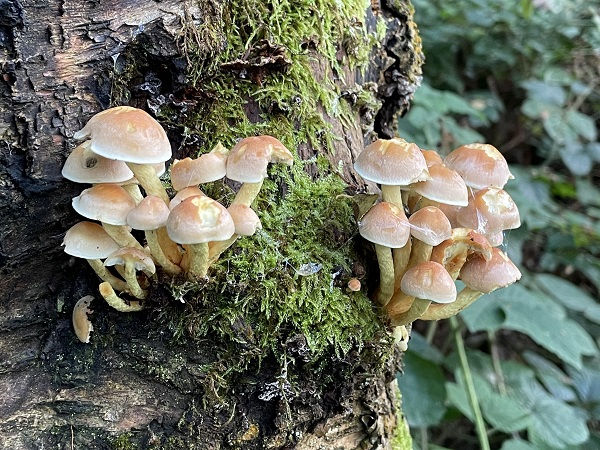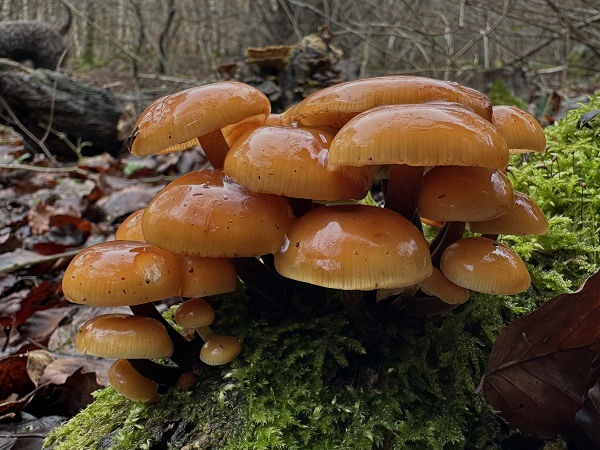Sulphur tuft - Hypholoma fasiculare
- The Foraging Course Company
- Jun 10
- 2 min read

Poisonous mushroom - novice identification Season - all year Common names Sulphur tuft, clustered wood lover
Scientific name meaning Hypholoma comes from the Greek words hyphe, meaning web, and loma, meaning fringe. Fasiculare is from the Latin fasiculus, meaning bundle
Habitat  Sulphur tuft is saprobic on wood inlcuding buried wood. |
Overall structure and growth  A yellow mushroom growing in tight clusters (tufts) on dead wood. |
Cap  The cap is a sulphur yellow colour and often has a tan tone in its centre. It is convex, sometimes with a central umbo (bump). It reaches 2 to 7cm wide. |
Gills and spores  The crowded, adnate (broadly attached to the stem) gills are a sulphur yellow at first, turning olivaceus-green and blackening with age. The spore colour is dark purple-brown. |
Stem  The stem is 0.5 to 1cm in diameter and 5 to 12cm tall, and normally has a curve. It has web-like veil remnants, often tinted black by spores, rather than a solid ring. Its colour is sulphur-yellow, darkening at the base. |
Flesh, taste and smell  The flesh is sulphur-yellow. The smell is mild and taste is rather unpleasant/very bitter. |
Possible lookalikes  Could be easily confused with the brick tuft (Hypholoma lateritium) but its cap is redder and the gills turn olive-brown, or the conifer tuft (Hypholoma capnoides) but this has pale grey gills. May be mistaken for the velvet shank (Flammulina velutipes) but this has cream gills and a brown, velvety stem. |
Poisonous parts All parts of this mushroom are poisonous and should not be consumed Hazards All parts of this mushroom are poisonous and should not be consumed
Use in herbal medicine and medicine None known
If you are suffering from any ailment or need medical advice, please see your General Practitioner Other uses Being used experimentally in forestry to see if it will competitively displace the parasitic fungus Armillaria solidipes/ostoyae Importance to other species Provides food for invertebrates
Always stay safe when foraging. You need to be 100% sure of your identification, 100% sure that your foraged item is edible, and 100% sure that you are not allergic to it (it is good practice to always try a small amount of any new food you are consuming). If in doubt, leave it out!









Comments